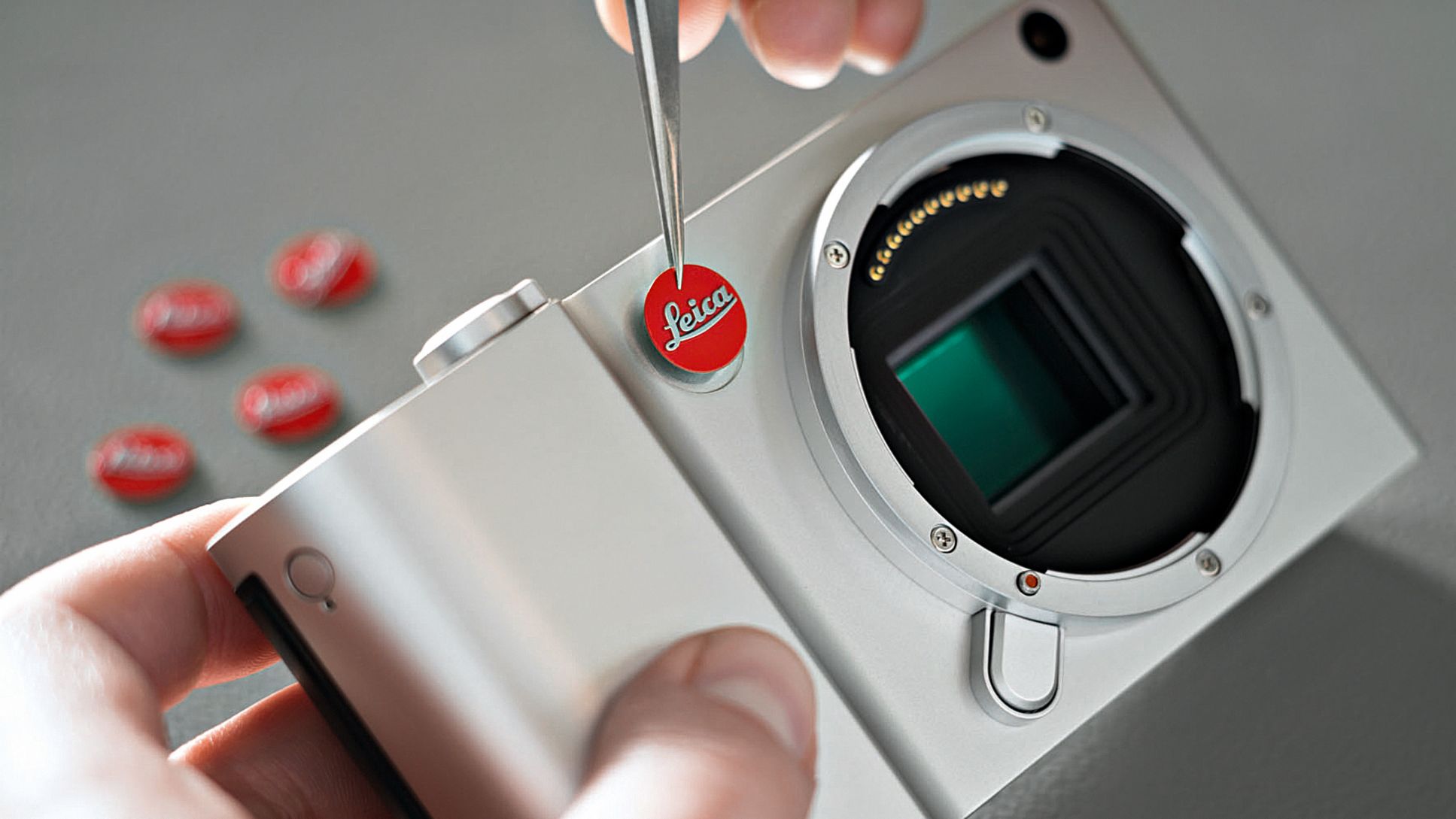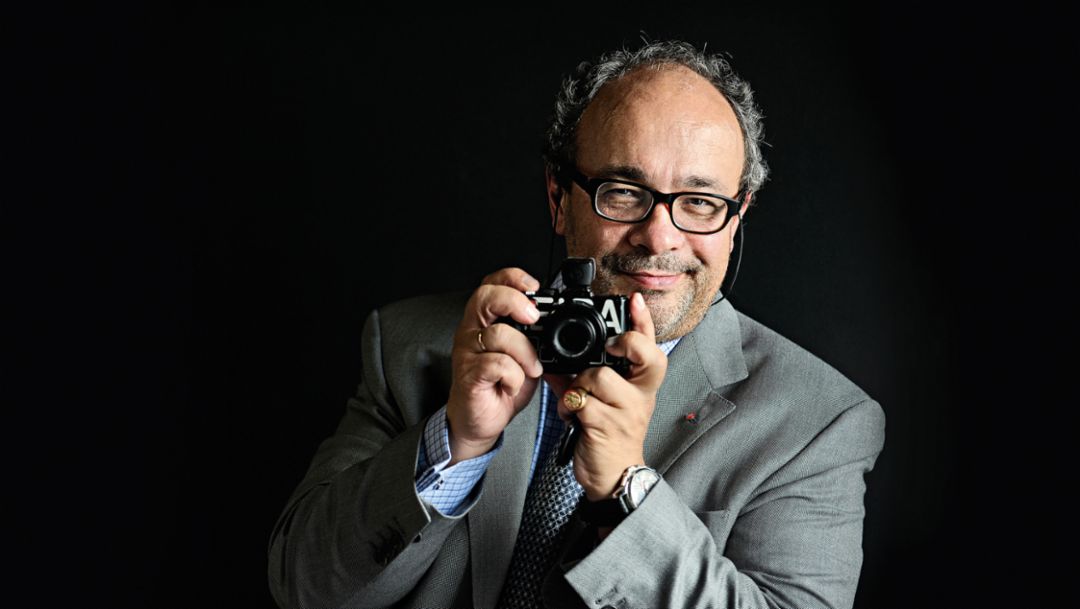The shift from analogue to digital technology marked a major turning point for Leica. The man who brought this German company back from the brink has his office in the neighboring country of Austria. On the edge of Salzburg’s historic district, in a villa whose glass doors are engraved with quotations from famous photographers, we are greeted by Andreas Kaufmann (60), who became the majority shareholder of the iconic company in 2006. It has not always been a dream job. When Kaufmann took over Leica, the once so successful and established company was mired in insolvency. A former Waldorf schoolteacher with a background in anthroposophy and capital from the sale of the Austrian paper corporation Frantschach, he revitalized the legendary manufacturer with a combination of private funding, loving attention, and visionary courage.
Today this unusual supervisory board chairman is guiding Leica on a path of international growth. With its cutting-edge cameras and lenses and flagship stores on shopping boulevards around the world, the company’s sales rose to more than 300 million euros within a few years and are expected to reach half a billion in the near future. A new factory was built where it all began, in the central Hessian city of Wetzlar, which nearly doubled its production capacities. Festivities marking a century since Oskar Barnack’s invention of the original camera known as the Ur-Leica, which gave the world the 35 mm format, also celebrated the comeback of a world brand. But things did not always look this rosy. The parent company Ernst Leitz let go of Leica in the late 1980s. A listing on the stock market in 1996 generated more problems than revenue.
After mastering its financial reorganization, the company sought support from Porsche Consulting. The aims were to establish viable processes for new growth, to place new products, and to manage increasing volumes while also safe-guarding Leica’s superior quality.
Leica´s employsees showed courage
Porsche Consulting has now participated in a handful of projects at the legendary company. A central part of its work has been to introduce an overall process of change based on the principle of “We show you—you do it.” Gregor Grandl, Partner at Porsche Consulting, describes it as follows: “The Leica employees had just gone through a period of great uncertainty, so it was especially important to embolden them to make changes, to instill enthusiasm, and to train them in this approach. They could then pursue optimization on their own and pass this on to other divisions.”
Principles of lean production were first put into practice in the assembly process for M-series lenses. These lenses had previously been ground and processed at individual desks and then carried in boxes to the next work station. “We introduced the flow principle and instituted a takt like in the automobile industry,” reports Grandl. Production has since become more uniform, stable, and easier to plan. Introducing checkpoints at individual work stations helped detect errors early on and avoid them altogether, as well as ensuring the high level of quality that Leica cameras are known for. Synchronizing suppliers, development, and production also helped to increase both quality and volume, and the company eliminated a 20 percent backlog.
At the same time, supply chain management was used to improve overall planning and control of demand and capacities—both at the company itself and at its suppliers. The Porsche Consulting team also supported Leica in its development of new products, such as the groundbreaking S2 medium-format camera. Production was started on schedule, the cost target was met, and the project was kept within budget. A newly designed platform for lens development has enabled families of lenses to be produced on a modular basis to a greater extent.
Focus on the entire supply chain
The overall aim was to optimize the entire supply chain, including the supply processes. In large part this means doing a better job of integrating and organizing the development, planning, production, and purchasing departments. For ex ample, the company’s developers were organized in teams and thus relieved of a number of internal meetings, e-mails, and reporting procedures. In the meantime Leica has undergone dramatic growth—and considerably improved its operational excellence.
The basis for this success consisted of putting viable processes and structures for the future into place. According to company owner Dr. Andreas Kaufmann, however, the key factor in success has been the conviction on the part of the employees. Following years of turbulence, Leica’s employees had to break with old pat-terns and engage in a completely new way of thinking. As he sums it up, “We cleared out the cobwebs from our factories and are now more confident than ever.
“The company was substantially underfunded,” says Kaufmann. Once a leading innovator and relentless trailblazer in precision mechanics and high-speed lenses, the company let revolutionary developments like single-lens reflex technology, autofocus, and digitization wash over it as it watched competitors fly past on the wings of new trends. Leica was soon viewed as old-fashioned, and its sales and profits plummeted. Kaufmann observes that the decisions not to use the latest technology made sense at the time—it was only in retrospect that such decisions turned out to be mistakes.
New products are developed more rapidly
On becoming the majority shareholder, Kaufmann turned Leica around. The company has been back in the black since 2009, and has been posting a series of record years. Flexing his muscles on a number of occasions, Kaufmann replaced CEOs who no longer had what Leica needed. He bought the shares owned by luxury-goods maker Hermès and took Leica off the stock market. In doing so he scarcely reduced the workforce, which currently numbers more than 1,300 in Germany and Portugal. Instead, he sought the support of Porsche consultants to optimize the entire supply chain from planning and purchasing to production as well as supply management and development.
The years of 2008 and 2009—in which three major investments by Leica collapsed on account of the economic crisis—were anything but smooth sailing for the company. CEO Kaufmann himself then took the rudder of the troubled ship. As a captain who stood for Leica with his name and capital, his first task was to regain the confidence of the company’s customers and employees. In Alfred Schopf he finally found the person he was looking for: an experienced CEO from the optics industry, Schopf has since directed Leica with success. “We’re back on track with him,” says Kaufmann. To support his plans for growth, Kaufmann also brought the Blackstone investment company on board as a strategic partner and sold 45 percent of the shares.
But the key to success lay in concentrating once again on masterful technology. “We had to focus on our areas of expertise—optics, for example—that also play a major role in electronic cameras,” recalls Kaufmann. He made sure that new products were developed more rapidly and purposefully, and that they were consistently aligned to customer needs instead of relying on the aims of developers. He sought to position the company correctly on the market with products for different price categories. And he finally achieved a breakthrough with the presentation of three new models.
“The important thing is that more and more people are taking pictures.”
With its new, digital medium-format S series, Leica introduced an out-standing single-lens reflex camera for professional photographers. “That model showed our expertise again,” Kaufmann notes. The company has since increased its share of this market niche to 25 percent. It was followed by the handy X series, a small instrument with a large sensor for reportages. This series in the lower price segment put the company’s success on a sure foundation. And finally the legendary M series made its mark in the digital age as well, with an extremely quiet range-finder camera. This series has been Leica’s showpiece and core product since the 1950s. “The summer of 2009 marked the turning point,” says Kaufmann. “The cobwebs are gone, and we’re hearing a lot of people say ‘check this out’ again.”
The drop in sales of compact cameras due to the widespread use of smart-phones is not upsetting Kaufmann’s strategy. On the contrary. “The important thing is that more and more people are taking pictures,” he says. Around 20 percent of them will leave the “snapshot stage” and want to do more in photography than what is possible with a cell phone. “At some point they’ll come to us and realize that Leica is something very special.” Then as now, for Kaufmann this includes German design and engineering as well as outstanding materials, feel, and precision optics. It also includes the nearly silent rangefinder mechanics, beloved above all by stage photographers because they disturb neither the actors nor the audience.
It’s also important to maintain the prestige and legendary quality of the brand. “You’ve got something special with a Leica,” says Kaufmann. “You buy its fascinating history and become part of a community that includes the finest, most famous photographers in the world.”
Info
Text first published in „Porsche Consulting - THE MAGAZINE", Issue 15
Author: Sven Heitkamp




.jpg/jcr:content/MANTURKIYE_IMG_0139_16_9%20(1).jpg)
